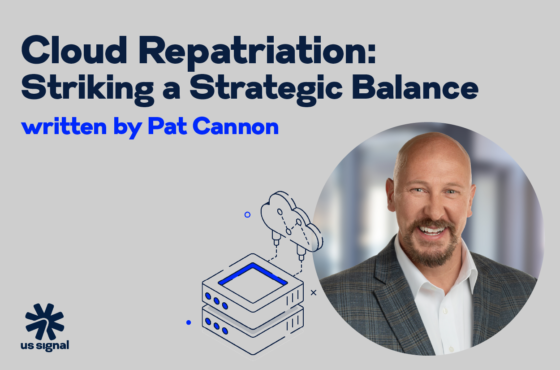Cloud Migration Pre-Planning
March 3, 2021
Cloud, Data Migration, Data Protection, Hybrid IT, IT Services
Updated: January 28, 2023
Despite what many cloud service providers (CSPs) advertise, moving to a public cloud isn’t quite as simple as swiping your credit card and clicking on a few buttons. While every customer’s situation will be different, the actual data migration can be time-consuming, labor-intensive, and disruptive. With the right preparation, however, it doesn’t have to be.
The following information can help you build your cloud migration plan — and ensure the success of the migration.
Go solo or choose a partner
If you’ve done a cloud migration before and have sufficient resources for carrying one out, you’re ready to move ahead. Check back on your “lessons learned” from the previous migration and get your plan and resources in place.
If you’re a first-timer and/or are short on resources or are facing a complex move, don’t hesitate to enlist the help of a cloud services provider (CSP) or a cloud consultant. Many CSPs offer professional services specifically for handling cloud migrations.
Do your due diligence before committing to a CSP or other partner. Check references. Make sure any company you choose to work with can deliver what you need.
Whether you’re handling the move to the cloud internally or going with a partner, clear, concise, and frequent communication will be key. Make sure all participants in the migration understand their roles and responsibilities, the schedule, and the plan.
Determine what will move
Make sure your applications are appropriate to move and ready to move. Assess them by asking these and any other pertinent questions:
- How important is the application to the company or line of business?
- Is the application up for a refresh or approaching retirement?
- Can or should it be refactored or rewritten to ensure it will perform optimally in the cloud?
- Would it be better to replace it with a SaaS solution?
- Is it monolithic, two-tier, three-tier, or n-tier? How hard would it be to modularize it or separate the tiers?
- Does it scale out or scale up?
- Who are the users of the application and what is their usage rate?
- What are its demand fluctuations? Will moving it to the cloud affect demand?
- What are the dependencies between the application being migrated and other systems?
- How much data exchange will occur between the components of the application and between the application and the user?
- Are there compliance, security, dependencies, or other issues that will prevent legacy applications from moving to the new environment?
- If an application can’t move, what are the plans for it?
- Do your applications need to be highly available?
For this last question, there are two important factors to consider: recovery time objective (RTO) and recovery point objective (RPO). RTO is the amount of time that it takes your business to recover from failure with acceptable losses. RPO is how long your business can operate without its data, respectively. The RTO and RPO for mission-critical applications will likely need to be close to or at zero.
You’ll also need to prioritize which applications move first. Their criticality and usage patterns will play key roles in this. It’s typically recommended that you start with non-critical applications to test both the migration method you use and the new infrastructure.
Choose your migration method
Common migration methods include:
- Manual data migration between your existing operating system and application environments and the CSP’s environment
- Offline media transfer via shipping portable media
- Internet transfer of virtual disk images
- Software agent-based data replication between your existing operating system and application environments and the CSP’s environment
- Full server replication from the existing operating system and application environments and the CSP’s environment using software agents
When choosing a migration method, you’ll need to consider numerous variables such as:
Distance: How far are you from your designated cloud infrastructure?
Transport: Will you be migrating data over the Internet or Ethernet, or physically transporting it?
Cost: Will the migration process require you to pay for a courier service, Internet bandwidth, software, experienced labor or possibly conversion or migration tools? Have you built-in contingencies into your budget to cover unexpected issues that may arise?
Risks: Will the number of servers increase the complexity of the job? Do you have enough bandwidth? Do you have a long enough window for completing the task? How will you protect your data while it is in transit? Will latency be an issue? Do you have internal IT resources?
Size: How large is your server infrastructure? What migration methodologies are most appropriate based on the size of your workloads?
Put your plan in place
While there are numerous other components that go into a cloud migration plan, the information discussed in this blog will give you a good start. You’ll find more helpful tips in our blog Cloud Migration: Basic Considerations and our free eBook: Ready. Set. Migrate.
To learn how US Signal can help you migrate to the cloud, call 866.2. SIGNAL or email [email protected].
Additional Cloud Migration Resources
To learn more about cloud migration, check out these articles below from our blog or visit our resource center for whitepapers, e-books and more!


